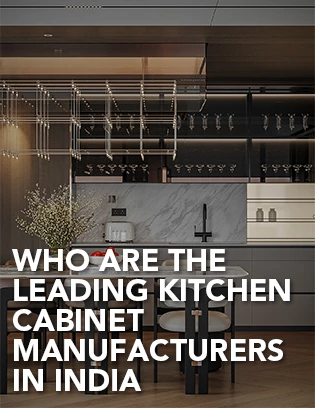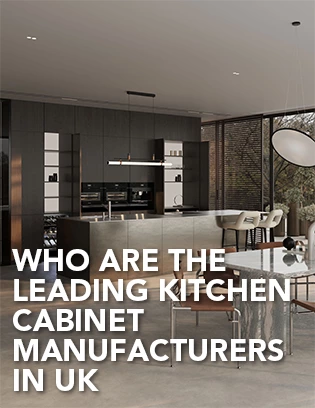Melamine vs. Wood Veneer Finishes: Which is Better for Your Kitchen Cabinets
There’s a reason so many kitchens aim to bring in the warmth and texture of wood. A wood-look cabinet surface adds character, calm, and a visual softness that balances sleek appliances and stone countertops. But not all wood finishes are created the same.
Two of the most commonly used materials for wood-look cabinets are woodgrain melamine and wood veneer. At a glance, they may appear similar especially in a professionally styled showroom, but they perform quite differently when it comes to touch, aging, maintenance, and cost. The material under the surface matters just as much as the look on top.
Let’s take a closer look at how these two finishes compare and where each one fits best in a modern kitchen design.

Woodgrain Melamine: Consistency, Durability, and Everyday Ease
Woodgrain melamine is a printed decorative layer bonded to a core panel, usually particle board or MDF, using heat and pressure. What makes melamine particularly appealing is its ability to mimic real wood grain in a consistent, low-maintenance way.
Advantages of Woodgrain Melamine
Reliable Appearance: Uniform wood patterns and synchronized textures provide a clean, balanced look throughout the space, especially important in large kitchen layouts or open-concept homes.
Highly Durable Surface: Scratch-resistant, stain-resistant, and moisture-resistant, melamine holds up well against daily wear—ideal for families, rentals, and high-traffic kitchens.
Cost-Effective: Compared to natural wood products, melamine is significantly more budget-friendly without compromising on visual quality.
Low Maintenance: No sealing, no polishing. Cleaning requires only a soft cloth and mild detergent.
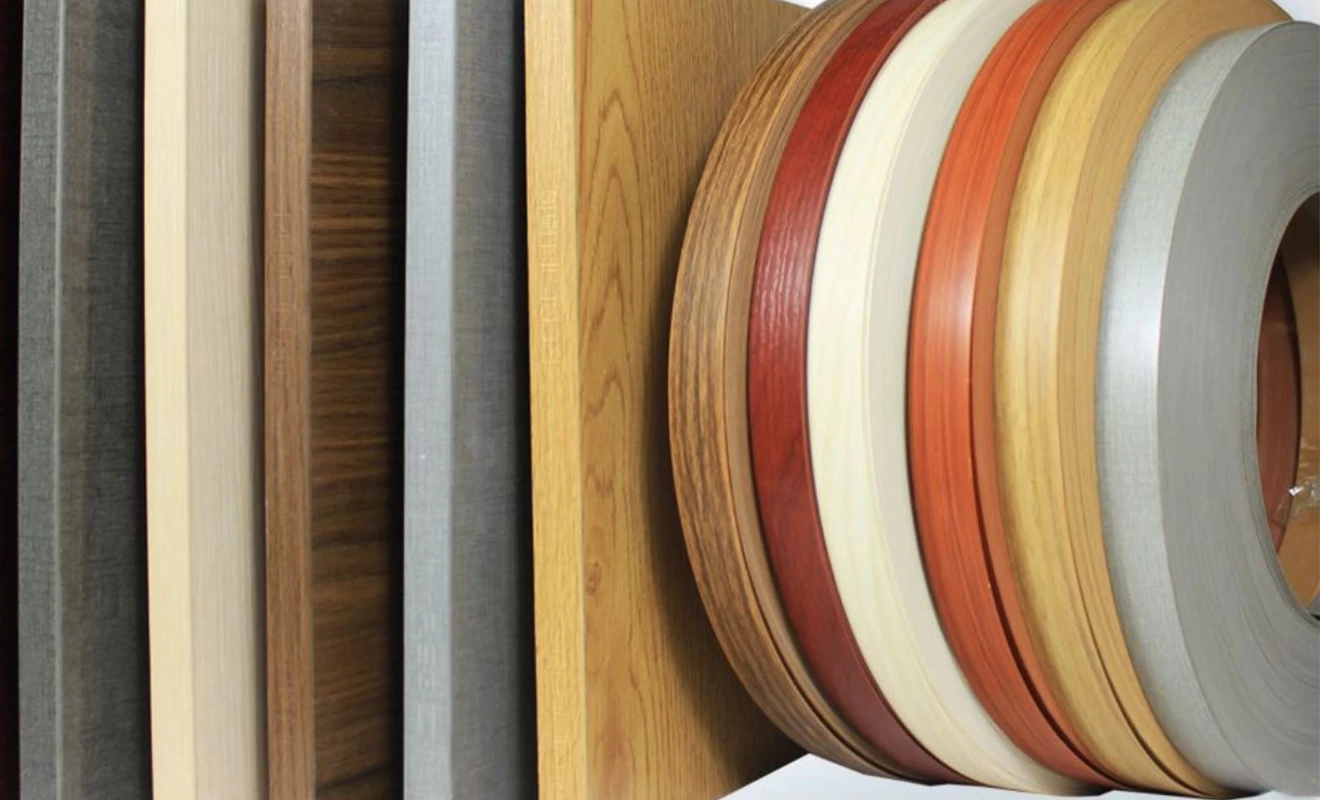
Limitations of Woodgrain Melamine
Lacks Natural Variation: Since the woodgrain is printed, it doesn’t feature the knots, tonal shifts, or unpredictable charm of real wood.
Flat Appearance Under Light: While textured versions exist, the surface can feel less dimensional than real wood veneer, especially under certain lighting conditions.
Not Ideal for Complex Detailing: Melamine panels work best with flat or slab cabinet doors, as the surface can chip with heavy routering or decorative profiles.
Wood Veneer Cabinets: Authentic Texture and Natural Variation
Wood veneer uses a thin slice of real wood, typically bonded to an MDF or plywood core. The result is a surface that maintains the tactile richness and organic variation of solid wood, while minimizing issues like warping and cracking.
Advantages of Wood Veneer
Authentic Wood Character: Grain patterns, subtle imperfections, and natural tonal shifts give each panel a unique story. No two cabinets look exactly alike.
Design Versatility: Veneers can be matched or intentionally mismatched across different surfaces, allowing for more expressive or luxurious cabinetry.
Aging with Grace: Real wood veneer develops a natural patina over time, adding depth and richness to the overall design.
Sustainable Luxury: Veneer uses less timber than solid wood cabinetry, making it a more eco-conscious way to achieve an upscale wood look.

Limitations of Wood Veneer
More Sensitive Surface: Veneer requires more care when cleaning, and can be scratched or damaged more easily than melamine.
Moisture Caution: Without proper sealing and edge treatment, veneers may lift or warp when exposed to excess humidity or water.
Higher Cost: Veneer tends to be more expensive than melamine, both in material and labor, especially if matched grain or premium species are selected.
Limited Impact Resistance: Sharp blows or edge wear are harder to disguise, and repairs may require refinishing an entire panel.
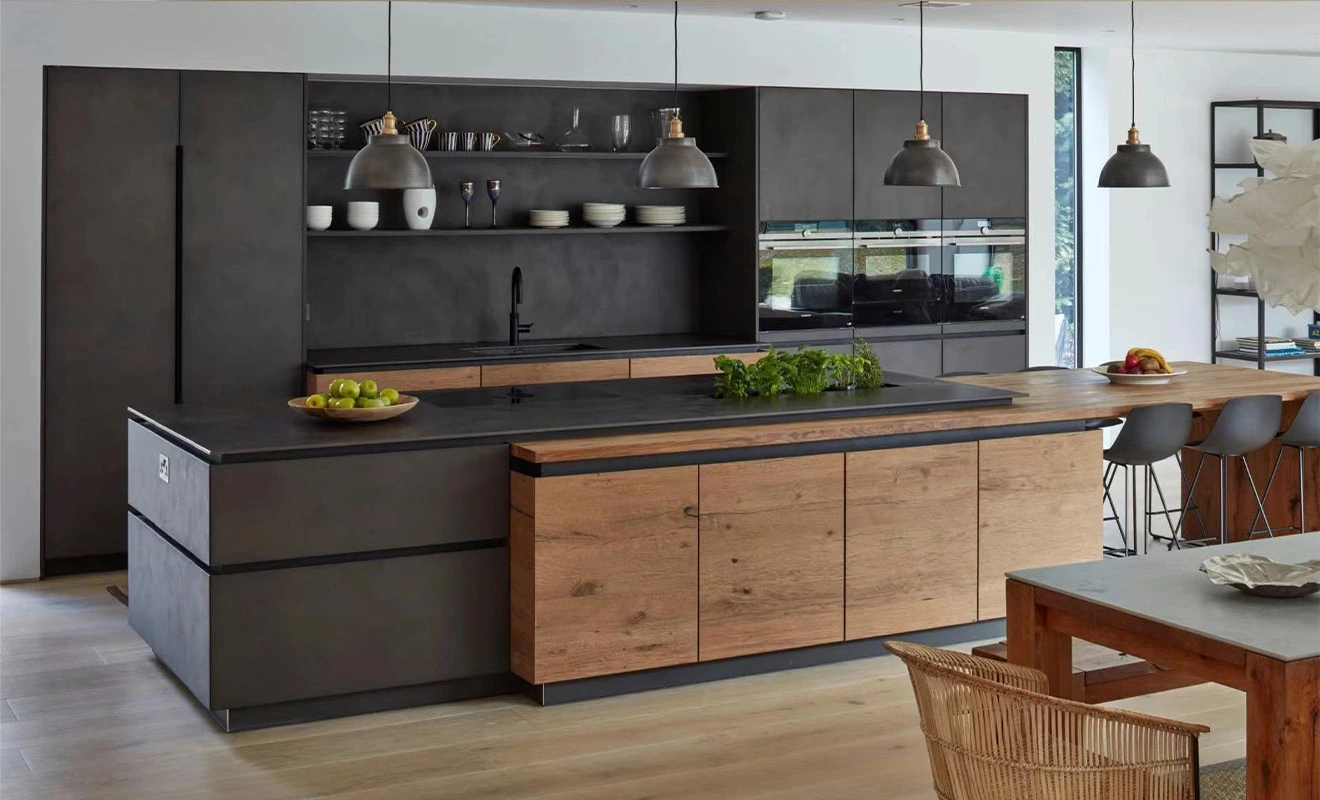
Feature Comparison Table
| Feature | Woodgrain Melamine | Wood Veneer |
| Material Type | printed decorative layer | thin slice of real wood |
| Visual Consistency | highly uniform | natural variation |
| Surface Texture | synchronized or embossed | Authentic grain texture |
| Durability | excellent (scratch, stain) | moderate (require care) |
| Maintenance | low-effort cleaning | gentle product recommended |
| Aging Over Time | no visible change | natural patina develops |
| Customization | limited to catalog design | species, cuts, and stains vary |
| Price Point | budget-friendly | mid to high-end |
| Sustainability | often made with recycled content | Renewable resource |
How to Differ Woodgrain Melamine and Wood Veneer
Even to a trained eye, melamine and wood veneer can look strikingly similar—especially with today’s advances in synchronized texture printing and embossing. But there are subtle, telltale clues that reveal what you’re working with.
Check the Edges: Melamine panels usually have visible edge banding—often plastic or ABS—that may differ slightly in color or texture from the face. Veneer edges, by contrast, are real wood and may show more seamless grain continuation.
Run Your Fingers Across the Grain: Wood veneer feels organic and varied, with subtle changes in texture and depth. Melamine often feels smoother or has a consistent embossed texture that repeats.
Look for Pattern Repeats: Since melamine is printed, you may notice identical wood knots or grain lines repeating on different doors. Veneer panels are all unique—even when book-matched or sequenced.
Observe How It Reflects Light: Melamine surfaces tend to reflect light evenly, especially in matte or gloss finishes. Veneer, being natural wood, absorbs and scatters light in irregular ways, giving it more dimension.
Allure Helps You Find the Right Finish
At Allure, our design approach is never about choosing one material for an entire home—it’s about balancing performance and beauty across different zones of your kitchen.
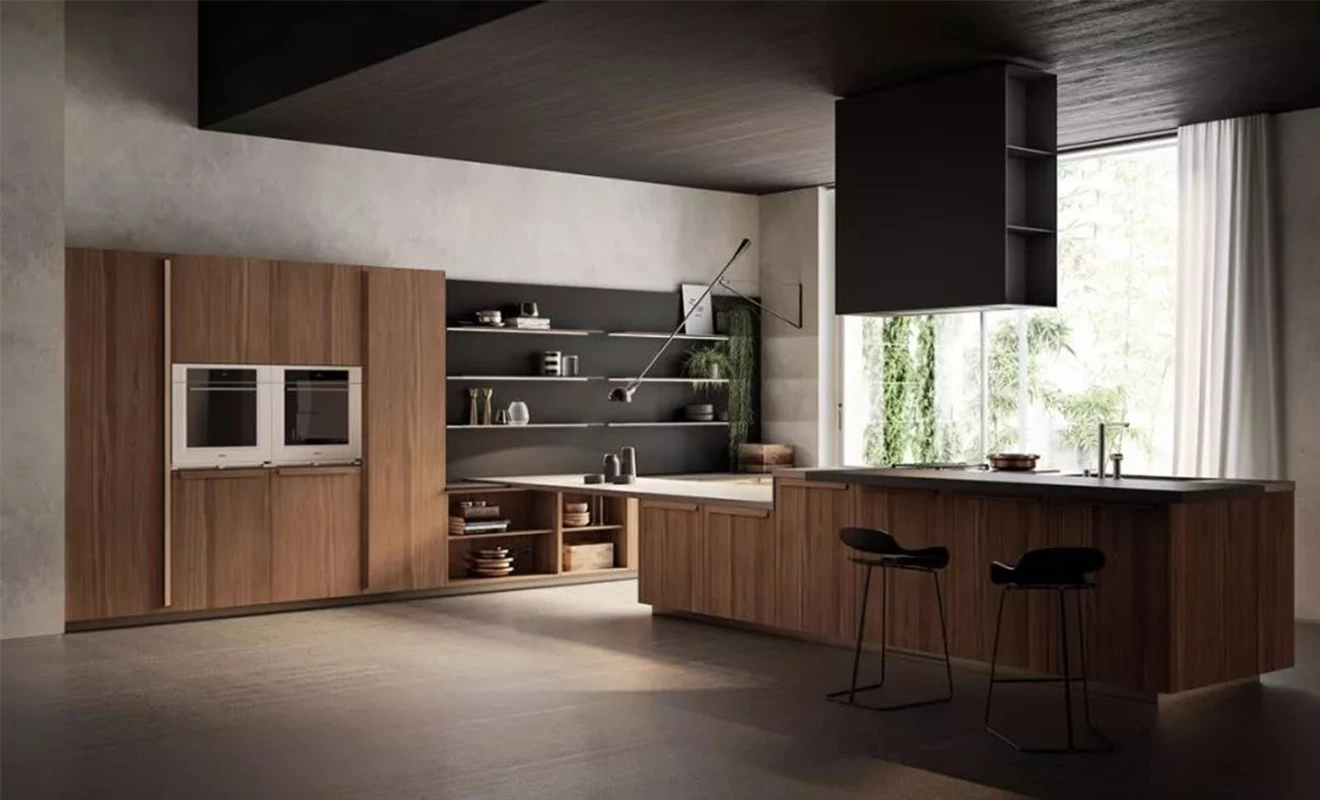
For hardworking family kitchens or investment properties, woodgrain melamine is often the most practical choice. It performs under pressure, looks clean and modern, and holds up well with minimal upkeep.
For statement kitchens or projects where tactile authenticity matters, wood veneer elevates the look and feel of the space. It's a designer favorite for feature panels, wall-mounted cabinetry, and kitchen islands where wood texture becomes a focal point.

Blending both materials is also a popular route. For example, pairing melamine base cabinets with wood veneer upper units adds depth without overwhelming the budget. It’s an approach that celebrates both practicality and craft.
All Allure cabinet systems are available in a wide range of melamine and veneer finishes, with custom grain matching and edge detailing tailored to your project goals. Whether you’re working with a minimalist palette or layering rich textures, we help bring your vision to life with finishes that make sense—both visually and functionally.
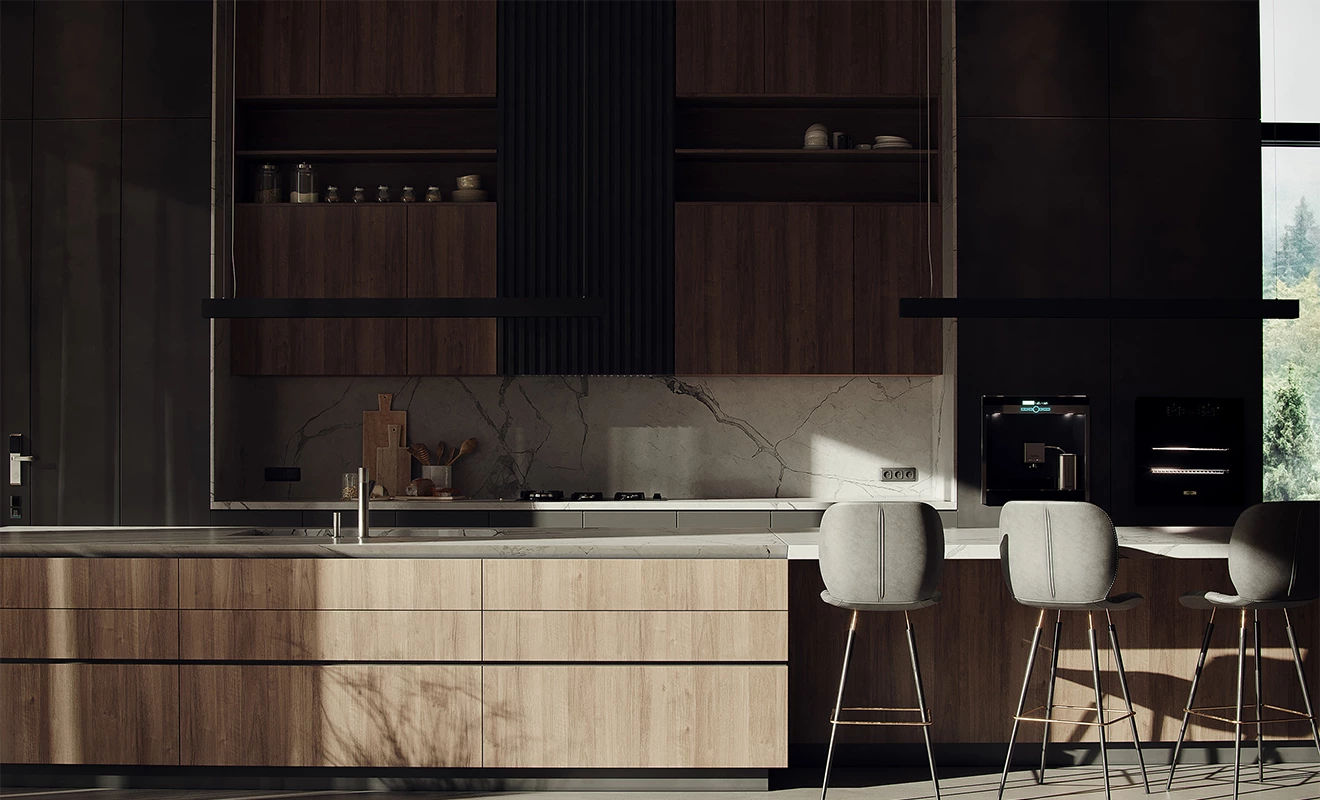
Conclusion
Choose woodgrain melamine if you’re after a budget-conscious, durable, and low-maintenance wood look that stays consistent across your kitchen. Opt for wood veneer if you value natural variation, subtle aging, and a surface that feels truly bespoke and elevated.
Whichever path you take—or if you choose to mix both—Allure ensures your materials do more than just look good. They perform, evolve, and tell a story that fits the way you live.

